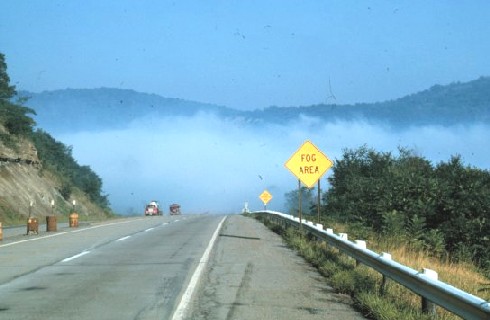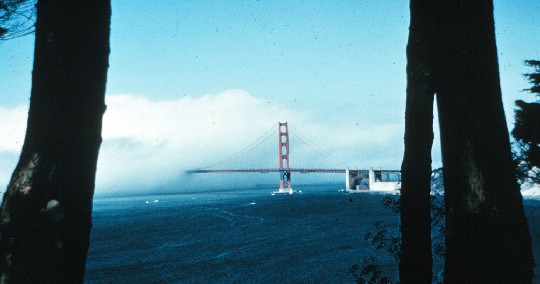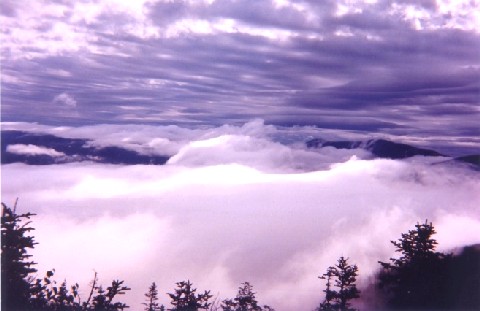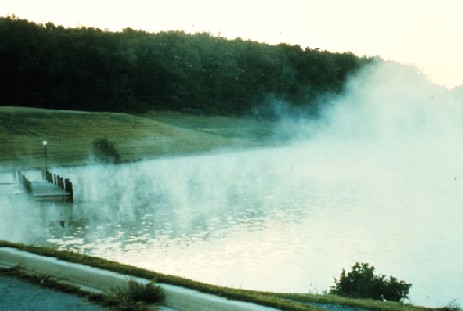|
Fog - The Nuisance That Can Turn Deadly
Fog may not be the most dramatic of weather's hazards, but it can create serious problems by causing airport closures and road pile ups. Fog is basically a cloud in contact with the ground. By definition it exists when visibility is less than 1000m (O.6 miles) and is classed as thick when visibility is reduced to less than 100m or 220 yards, depending on whose system you use. Like cloud, fog will form when, things like air pressure andwater content being equal, the temperature drops below thedewpoint. Effectively, at this temperature the air is saturatedwith water vapour - and vapour condenses to water droplets. Please don't ask me to explain the dewpoint, or dewpoint temperature. Every so often I feel I have it nailed, butif I take my eye off it understanding slips away. Fortunately the dewpoint doesn't matter too much when airtemperature is falling reasonably rapidly, because oncecomplete saturation is reached it will stay that way untilthe temperature starts to rise (all other things beingequal) So, to recap, fog will form when the temperature of the airfalls to a point when water vapour must begin to condenseand form the water droplets that fog is composed of. Fog comes in many forms, and the two most important areradiation fog and advection fog. Both have the powerto disrupt transport over large areas for considerablelengths of time.

Valley Fog, a form of Radiation Fog
Radiation Fog
Radiation refers to the nighttime cooling of land by radiation of heat into the atmosphere. Calm conditions and a clear sky are necessary, while slow movement of cool air (air drainage) into the lowest areas, such as valley bottoms can result in local fogs.
As the ground cools it chills the air in contact with it, causing condensation and the formation of fog. As time passes and the fog thickens, the zone of maximum cooling of the air moves to the top of the fog bank, and considerable thicknesses of fog can build up over large areas.
Fogs also tend to be thicker on calm clear nights after rain, where air in contact with the ground can contain more water vapour than usual. The combination of all these factors leads to the notorious Tule fogs of the San Joaquin Valley in California, with their spectacular vehicle pile ups on bad days.
Radiation fog usually dissipates quite quickly in the morning as the atmosphere warms up and air begins
to move around. Tule fogs can last all day.

Golden Gate Bridge disappearing into
Advection Fog
Advection is meteorologist's talk for mostly horizontal air movement or wind, and advection fog forms when warmer moist air moves over a cooler surface. The air cools and water vapour condenses near the contact with land or water. The wind continually feeds in more moist air and thick, extensive moving fog banks can form.
Advection fogs commonly form over the sea, and can disrupt air and ground traffic if they move in over land. They can also form over cold land during the passage of a warm front, particularly if the land surface is covered with snow.
Freezing Fog
Freezing fog occurs when the air is cold and the ground is colder. The water droplets may be supercooled - below freezing point but lacking tiny particles to provide nuclei for the droplets to freeze around.
When they come in contact with cold ground, structures or vegetation they freeze instantly, forming coatings of frost-like ice called rime which can extend well above ground level.
Freezing fog can also form an icy glaze on paths and roads, similar to freezing rain. If only fog is involved, this is unlikely to cause problems. But often drizzle accompanies fog, and the glaze can thicken to levels approaching those of an Ice Storm, creating driving problems.
Freezing fog can also cause major agricultural losses if it occurs at critical times in the growing season.
Other Forms of Fog
Fog forms in several other ways, but these rarely create dangerous conditions or economic loss. These include
Avoiding Fog Hazards
Most fog related problems occur on roads, and major pile ups often occur when fast moving traffic enters thick fog. Common sense is your best defence, along with a fair bit of luck.
Slowing down as quickly as possible, turning on your lights, and keeping as much distance between yourself and the vehicles in front will help. Praying that the vehicles behind you are doing the same thing may or may not be as effective. Here's a graphic account of one man's account of a Tule Fog pile up.
Fog lights will help a while driving in fog - at the very least you will be more visible to other vehicles.

Valley fog below, strato-cumulus above
Observing Fog
Data from home weather stations can be very interesting during times of fog, particularly if your area experiences different types. The interaction of wind speed, temperature, outside humidity and particularly dewpoint is worth keeping an eye on. The Severe Weather page has links to a number ofarticles on other forms of hazardous and dangerous weather. Back to the Top, or return to the Home page. You may be interested to know that you can find out more about weather and home weather stations by receiving our newsletter ,"Watching Weather". It's published more or less weekly, and apart from tips on how to use your weather station and understand what it's telling you about the weather around you, it also covers many other weather related topics. If this sounds interesting, just add your name and email address to the form below. When you join, you'll also receive, totally free, a 20 page guide to setting up and trouble shooting problems in home weather stations. And I promise that you won't get spammed, and that your sign up details will remain totally confidential. Sign up now and receive your first issue almost immediately.
Last update 05/24/2011
|





